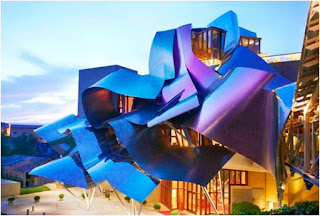 Indeed, the marriage between Luxury and sports has proved to be solid and dynamic, with luxury brands investing strongly in sponsoring sports events with ever growing budgets (Prada just recently committed 40M€ to the next America's Cup challenge http://bit.ly/veiMOa).
Indeed, the marriage between Luxury and sports has proved to be solid and dynamic, with luxury brands investing strongly in sponsoring sports events with ever growing budgets (Prada just recently committed 40M€ to the next America's Cup challenge http://bit.ly/veiMOa).Moreover, seasonality allows luxury brands to shape Lifestyle by adequately dosing their presence in the different scenarios provided by seasonal sports: spring golf tournaments, summer sailing, autumn outdoors -hunting is not entirely politically correct to be used as brand image- and winter sports. In this way, Luxury brands succeed to be ever present and ever changing.
Certain events and venues provide the stately flair much sought after by established Luxury brands which, by consistently appearing as sponsors of these, obtain not only the ROI on the spot but also a further contribution to the solidity of the brand image.
 |
| Wimbledon's Central court |
Indeed, consistency is valuable, and once a Luxury brand gets a spot in prime venues it will not be surrendered. It is said that in 1978, André Heiniger -the old Patron of Rolex- was reluctant to sponsor Wimbledon fearing to be perceived -in those days- as some other Japanese mass watch manufacturer arriving to the market. It just took him one visit to Wimbledon’s central court to say “this is Rolex” and since then, Rolex has been sponsoring Wimbledon… a spot that many other brands would love to snatch.
In the same way that the image of sport as a representation of status is sought after and enhanced by Luxury brands, a new trend has recently appeared willing to benefit from the item Lifestyle & Sport: The housing schemes linking with prestigious sports venues.
Within this general configuration, we must differentiate the projects that completely refurbish and transform existing facilities into entirely new developments, from those willing to maintain the prestigious venue and its current use, and benefit from such kudos to create a “Sports brand image” under which the properties would be marketed.
With regards of the latter category, it is clear that it does make sense to both developers and owners of the facilities. The question that will determine whether the concept is successful or not, is if a venue that hosts certain prestigious event(s) provides the Luxury and living Lifestyle that the very event represents.....Or in a nutshell, will it make sense for the future owners?
An excellent article by Graham Norwood in the FT covers the issue with examples of both approaches http://on.ft.com/qMtifn. The pros & cons are covered therein.
One could argue that those developers following the “Sport branded” approach pursue the same line of thought as Luxury brands entering hospitality and branded residences do.....In the end, the resulting product is more or less the same: Both schemes are likely to include the sports facility(ies), the hospitality component and the housing/residential.
Nevertheless the devil is always in the details and in this case, in the order of priorities.
While ones are bound to base the project on an existing venue that must continue to host certain events, Branded developments create a competitive product and are only bound to offer the qualities that the brand provides.
Furthermore:
(i) Luxury brands are committed to maintaining the value of their products and to increase the power of the brand itself. Hence, if by signing a development Luxury brands obtain the exposure sought after -see http://bit.ly/rQ10AU -, this exposure requires from them to ensure that brand standards are maintained.
Indeed, if Luxury brands solidity is brought by detail, quality and consistency, then brands will ensure that their residences and destinations -as any other of their products- maintain such qualities.
The brand is an intrinsic part of the development, and is there to stay.… a point that provides additional solidity to the investment.
(ii) Branded developments are business units in themselves. The three components (hospitality, housing and sports) may provide different sources of revenue but are run as one sole business.
This point not only implies that the priority will not be established in succeeding one or several events a year, but most importantly that there will be no conflict of interests between the holders of the different assets, properties or rights upon the facilities.
So, in the same way that Luxury brands take care of materials, design and manufacturing, they ensure the conceptual business and the legal framework to provide the expected services-consistently and year round- to owners, users and clients.
(iii) Finally, Luxury branded developments must be exclusive….
 |
| This is Wimbledon too |
And if several brands can bring the much needed exclusivity, no other can add the qualities of the well reputed “Coolest brand”: http://bit.ly/mdMAmz and http://bit.ly/oSjuiu
For more information please contact FIRSTLOGIC Consulting
http://www.first-logic.com
.




























